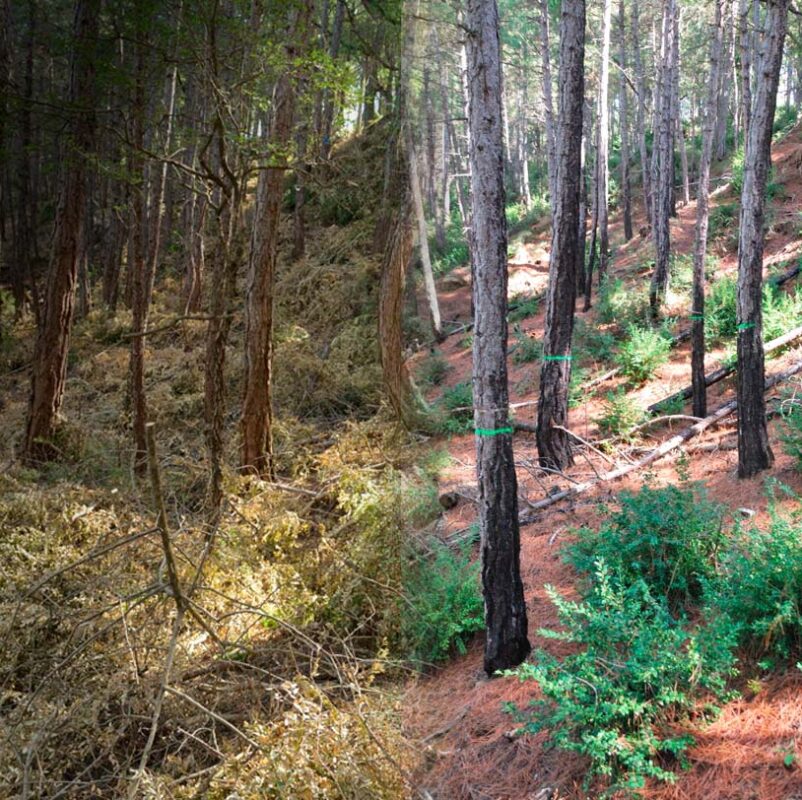Forest management aimed at reducing wildfire risk also promotes the resilience of forests to other disturbances
A study published in Ecological Applications shows that forest management practices, such as thinning followed by prescribed burning of the understory, not only reduce wildfire risk but also improve forest growth and increase forest resilience to drought. The research, carried out by a team of scientists from the Joint Research Unit CTFC – AGROTECNIO and the Soil Research Institute of the University of Natural Resources and Life Sciences in Vienna, Austria, reveals how forest management can increase the resilience of Mediterranean forests to drought episodes.
The main objective of the study was to determine how forest management practices, designed to reduce wildfire risk, influence the resistance and resilience of Austrian pine (Pinus nigra) to drought. The researchers examined three Austrian pine forests in Solsonès County, where they applied different intensities of thinning with and without prescribed burning of the understory.
Promising results
Both high-intensity thinning, with or without prescribed burning, and low-intensity thinning with burning stimulated the growth of Austrian pines, thanks to the reduction of both overstory and understory competition. This growth was stimulated by an increase in photosynthetic rate and stomatal conductance, mechanisms that allow plants to use water and nutrients more efficiently. In addition, prescribed burning after thinning not only promoted growth but also increased the resilience of the Austrian pines to drought, ensuring their recovery after these episodes.
These findings are particularly relevant in the current context of climate change, where episodes of severe drought are becoming more frequent and intense. “We have seen that forest management practices that are already being implemented to reduce wildfire risk have a double benefit, as they also promote forest adaptation to drought. This is crucial to ensure the long-term sustainability of Mediterranean forests,” explains Lena Vilà, a predoctoral researcher at the CTFC and first author of the study.
The innovative experimental design, which combines growth analysis with isotopic analysis under different management practices, provides a sound scientific basis for implementing these management practices on a larger scale. In addition, the study provides new questions for future research, such as the duration of management effects and their influence on other pine species and disturbances such as processionary moth or bark beetles.
“This duality of benefits makes these practices particularly valuable today. Their large-scale implementation could be key to the conservation of Mediterranean forest ecosystems,” concludes Pere Casals, leader of the Ecology and Silvopastoral Management research group at the CTFC.
This work has been possible thanks to the collaboration between several institutions, including the Vienna University of Natural Resources and Life Sciences (BOKU), and several European projects such as LIFE Climark and H2020 HoliSoils. These collaborations are vital to continue advancing research and practical application of forest management techniques in the context of climate change.
Further information:
, , , , , and . 2024. “ Thinning Followed by Slash Burning Enhances Growth and Reduces Vulnerability to Drought for Pinus Nigra.” Ecological Applications e3030. https://doi.org/10.1002/eap.3030
Last modified: 12 September 2024










